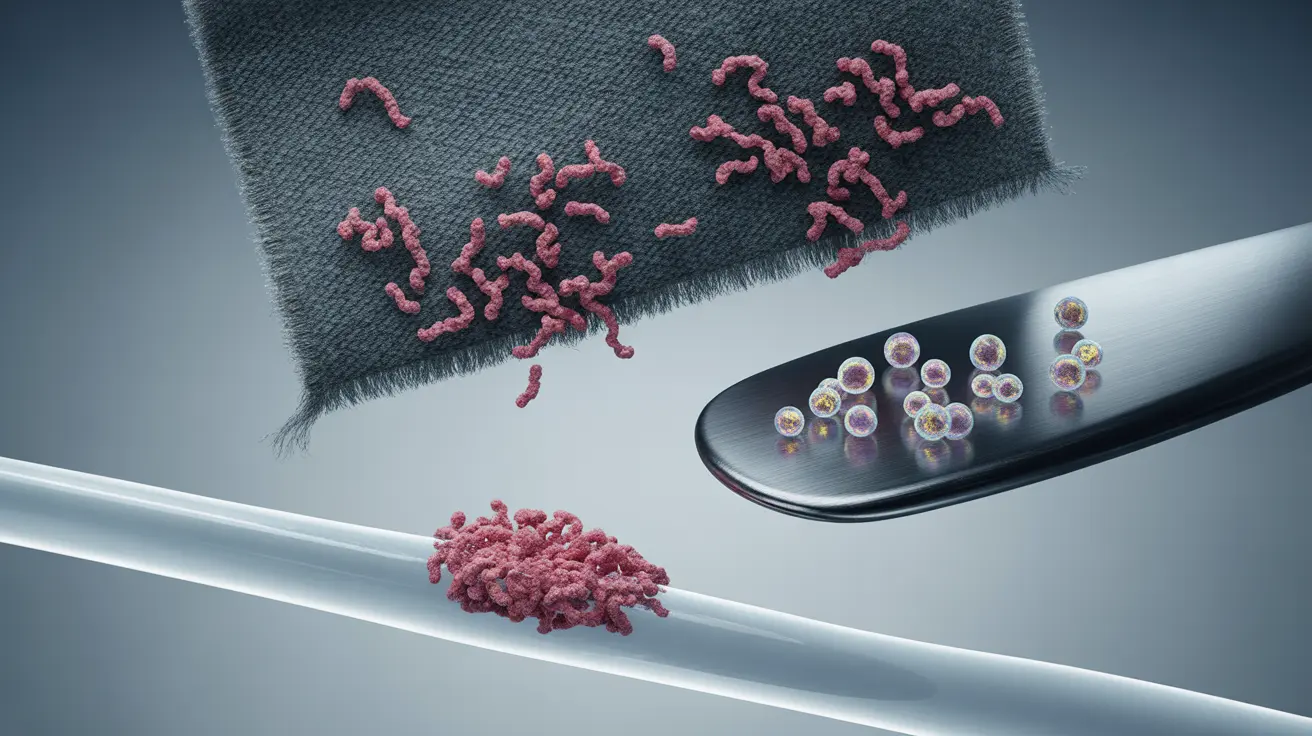Understanding how long pink eye pathogens can survive on various surfaces is crucial for preventing the spread of this common eye infection. Whether caused by viruses or bacteria, pink eye (conjunctivitis) can potentially transfer through contact with contaminated surfaces, making proper cleaning and hygiene practices essential.
This comprehensive guide explores the survival time of pink eye-causing organisms on different materials and provides practical advice for preventing transmission through surface contact.
Survival Time on Different Surfaces
Pink eye pathogens can persist on surfaces for varying lengths of time, depending on the type of organism and environmental conditions:
Viral Pink Eye
Viral conjunctivitis, the most common form, can survive on surfaces for:
- Hard surfaces and plastics: Several days to 2 weeks
- Fabric and soft materials: 12-24 hours
- Metal surfaces: Up to 24 hours
Bacterial Pink Eye
Bacterial conjunctivitis organisms typically survive:
- Hard surfaces: Up to 48 hours
- Fabrics: 8-12 hours
- Warm, moist environments: Up to several days
Environmental Factors Affecting Survival
Several key factors influence how long pink eye pathogens remain viable on surfaces:
- Temperature: Cooler temperatures generally extend survival time
- Humidity: Higher moisture levels can promote bacterial growth
- Surface material: Porous vs. non-porous surfaces affect pathogen persistence
- Exposure to sunlight: UV rays can help neutralize some organisms
- Environmental cleanliness: Presence of other organic material can protect pathogens
Effective Cleaning Methods
To eliminate pink eye-causing organisms from surfaces, implement these cleaning strategies:
General Surface Cleaning
- Use EPA-registered disinfectants
- Clean surfaces with hot water and soap before disinfecting
- Allow proper contact time for disinfectants to work
- Pay special attention to commonly touched surfaces
Fabric Care
For contaminated fabrics and linens:
- Wash in hot water (at least 140°F)
- Use color-safe bleach when possible
- Dry items completely on high heat
- Avoid sharing towels, washcloths, or pillowcases
Prevention and Risk Reduction
Take these precautions to minimize transmission risk:
- Wash hands frequently with soap and water
- Avoid touching eyes with unwashed hands
- Use separate personal items during infection
- Replace eye makeup and contact lens solutions
- Clean and disinfect shared surfaces regularly
Frequently Asked Questions
How long does the pink eye virus or bacteria live on different surfaces like fabric and plastic?
Viral pink eye can survive on plastic surfaces for up to 2 weeks, while on fabric it typically lives for 12-24 hours. Bacterial pink eye generally survives for up to 48 hours on hard surfaces and 8-12 hours on fabric.
What cleaning methods effectively kill pink eye germs on household items and surfaces?
Use EPA-registered disinfectants, hot water (140°F or higher) for washable items, and thorough cleaning with soap before disinfecting. Allow proper contact time for disinfectants, and ensure complete drying of cleaned items.
How long is viral pink eye contagious and capable of spreading through surface contact?
Viral pink eye remains contagious as long as symptoms are present, typically 5-7 days. Surface transmission risk is highest during the first few days of infection and decreases as symptoms improve.
Can pink eye spread by touching clothes, towels, or bedding, and how should these be cleaned?
Yes, pink eye can spread through contaminated fabrics. Clean affected items by washing in hot water with detergent and color-safe bleach, then dry completely on high heat. Avoid sharing personal items during infection.
What environmental factors affect how long pink eye pathogens survive on surfaces?
Temperature, humidity, surface material type, exposure to UV light, and environmental cleanliness all impact pathogen survival. Cooler temperatures and higher humidity generally extend survival time, while UV exposure can help eliminate organisms.




